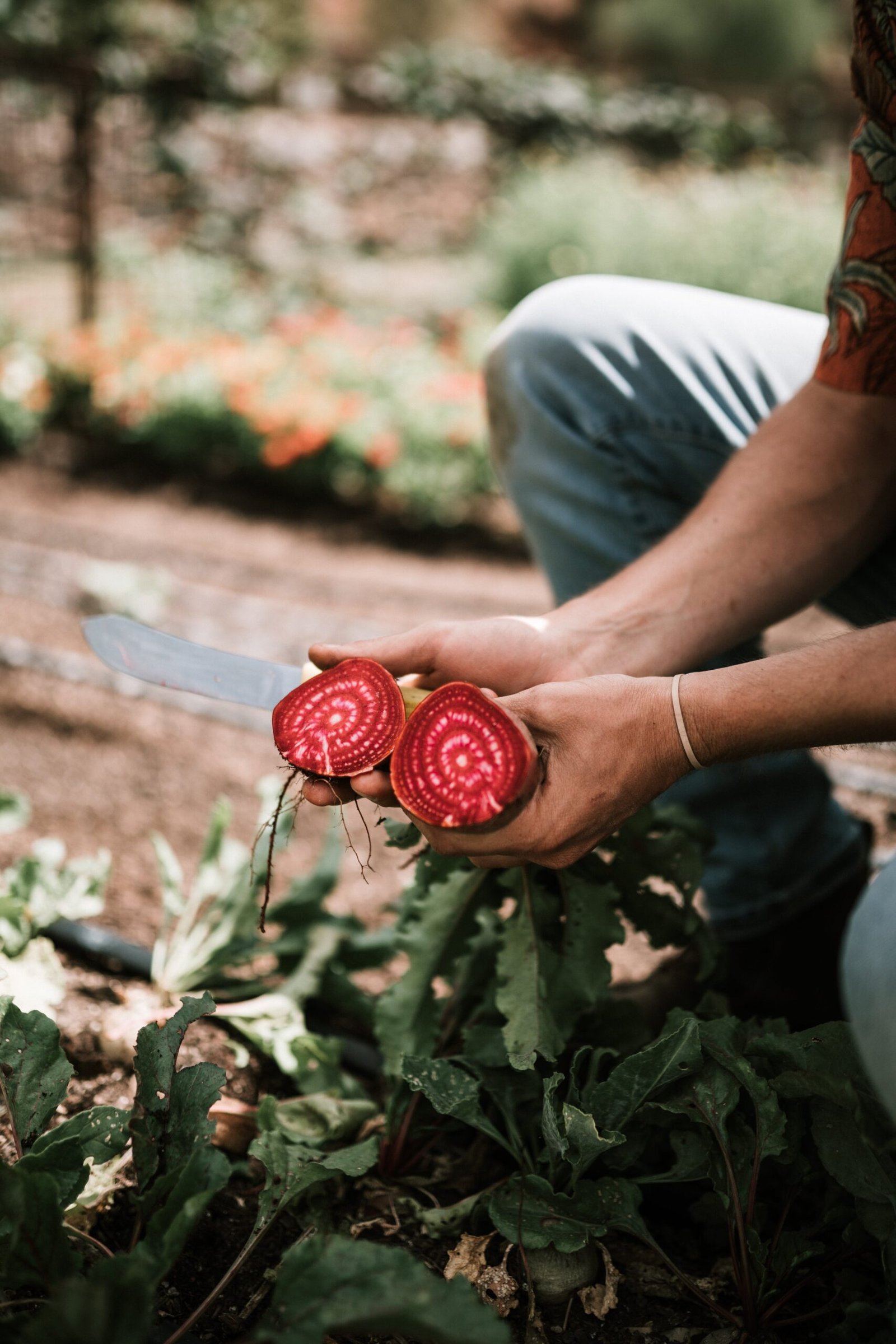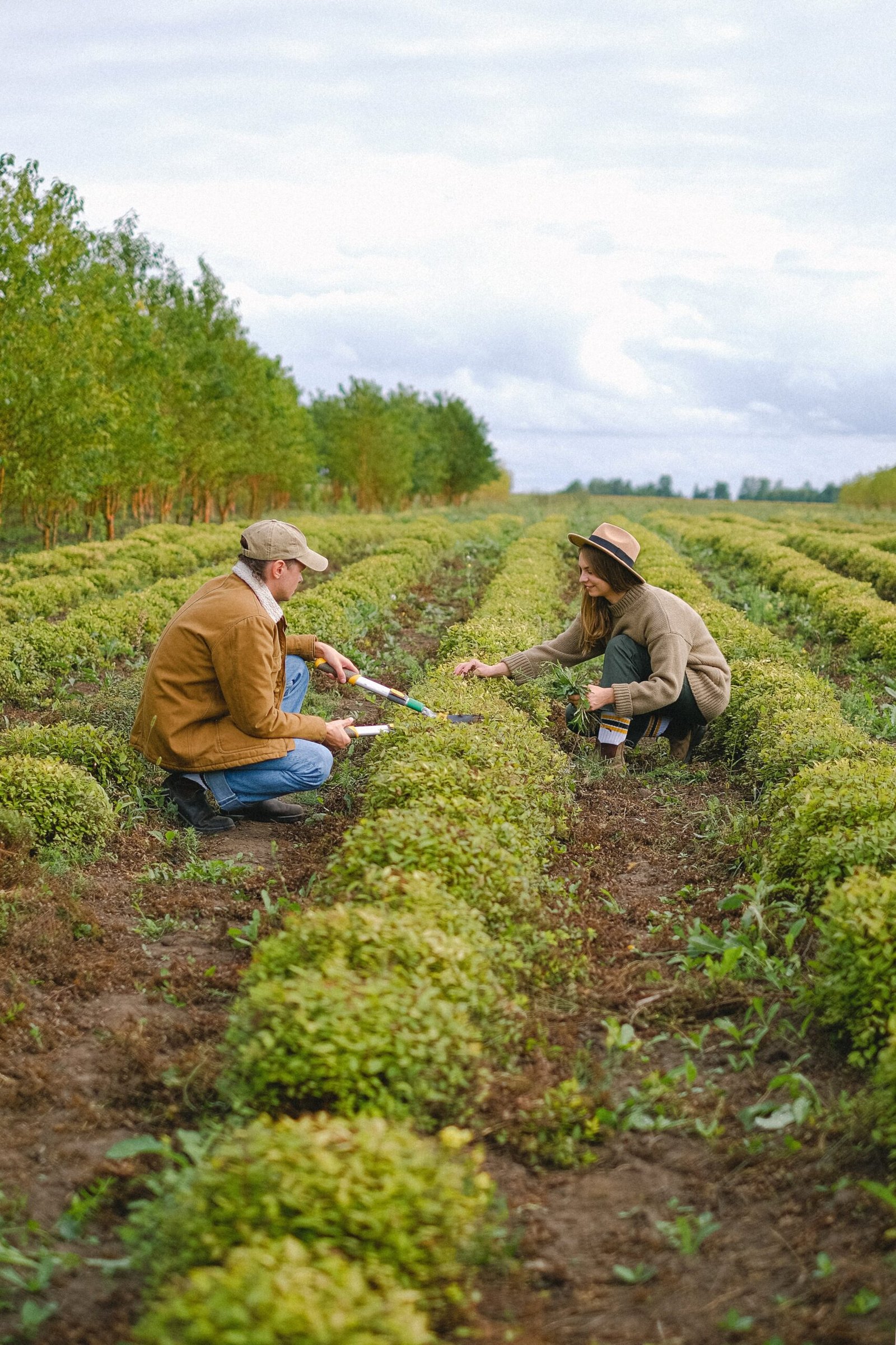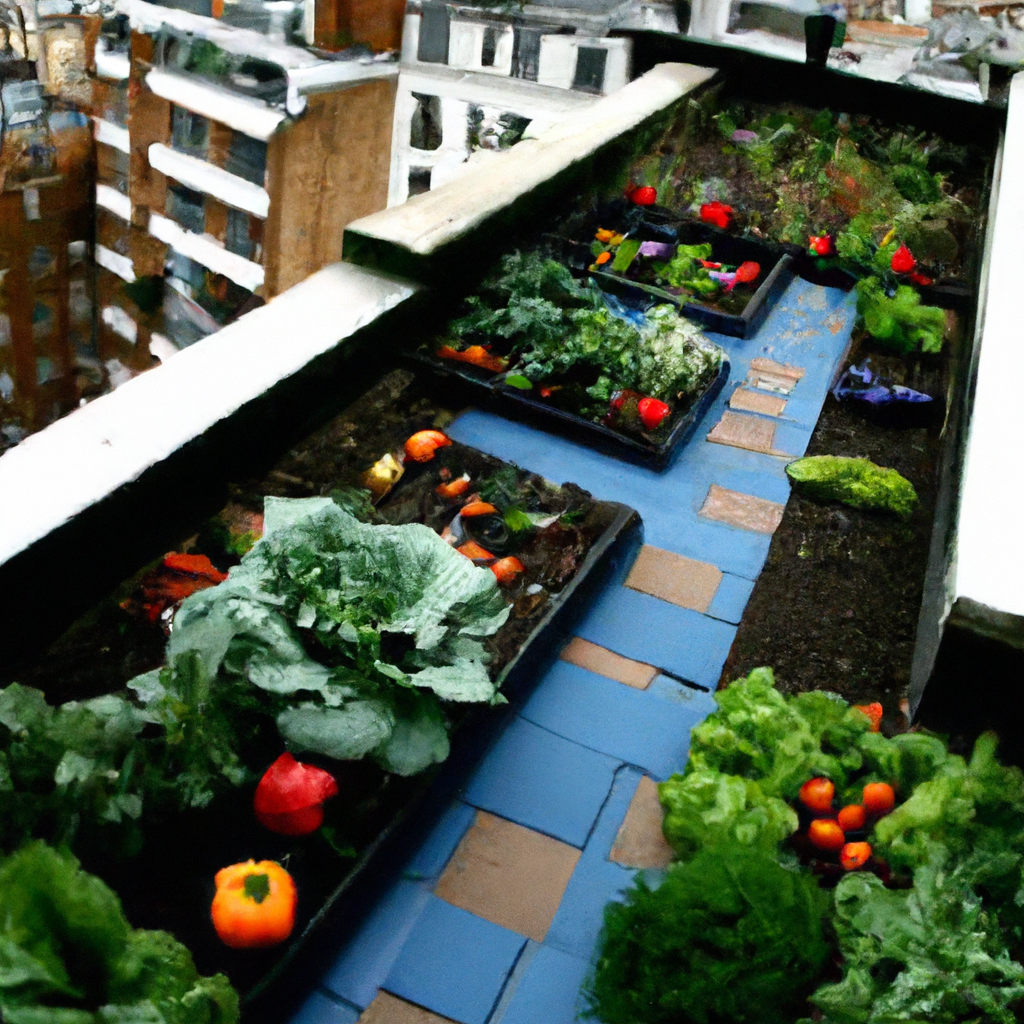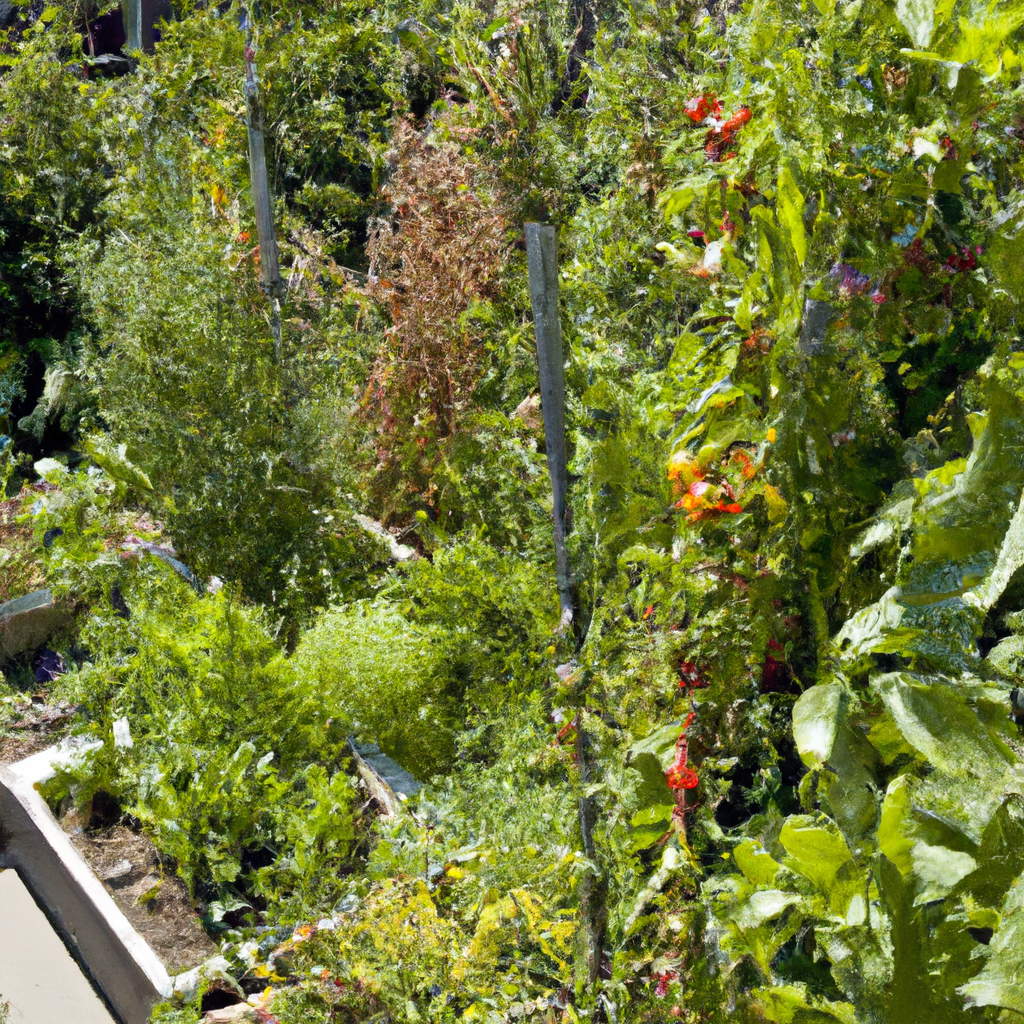
Imagine having your very own garden oasis in the midst of a bustling city. With these tips, you can transform your rooftop into a thriving and productive garden space. From selecting the right plants to utilizing vertical growing techniques, this article will guide you through the process of creating a flourishing garden in an urban environment. Get ready to enjoy the beauty and bounty of nature right at your fingertips.
Choosing the Right Plants
Consider the Climate
When selecting plants for your rooftop garden, one of the first factors to consider is the climate in your area. Different plants have different temperature preferences, so it’s important to choose varieties that will thrive in your particular climate. Research the average temperatures, rainfall patterns, and frost dates in your region to determine which plants are best suited for your rooftop garden.
Evaluate Sun Exposure
Another crucial factor to consider when choosing plants is the amount of sunlight your rooftop garden receives. Assess the sun exposure on your rooftop throughout the day to determine whether it is full sun, partial shade, or full shade. Some plants, such as succulents and sunflowers, thrive in full sun, while others, like ferns and hostas, prefer partial shade. Select plants that will flourish in the amount of sunlight your rooftop garden receives to ensure they stay healthy and vibrant.
Select Low-maintenance Plants
In an urban environment where time is often limited, it’s important to choose plants that are low-maintenance. Look for varieties that require minimal watering, pruning, and fertilizing. Succulents, for example, are known for their ability to withstand drought and require very little water. Herbs like rosemary and thyme are also relatively easy to care for and can add a delightful aroma to your rooftop garden. By selecting low-maintenance plants, you can create a thriving rooftop garden without spending too much time on upkeep.
Planning the Design
Assess Available Space
Before creating your rooftop garden, it is important to assess the available space. Take measurements of the rooftop area to determine the dimensions you have to work with. Consider any potential obstacles or features, such as air conditioning units or skylights, that may impact your design. By evaluating the available space, you can plan out the layout and ensure that your rooftop garden fits seamlessly into the designated area.
Determine Weight Restrictions
Rooftops have weight restrictions due to structural limitations, so it’s important to determine the maximum weight your rooftop can support. Consult a structural engineer to assess the load capacity of the rooftop and ensure that it can withstand the weight of your garden. By considering weight restrictions from the beginning, you can avoid any structural issues or safety concerns down the line.
Consider Fencing or Barriers
In an urban environment, it’s essential to consider the potential for wind and other external factors that could affect your rooftop garden. Depending on your location, strong winds or neighboring buildings may create a need for protective barriers or fencing. Installing appropriate barriers can help shield your plants from excessive wind, protect them from potential damage, and create a more peaceful and secluded atmosphere in your rooftop garden.

Creating Proper Drainage
Install Drainage Systems
Proper drainage is crucial for maintaining a healthy rooftop garden. Install drainage systems, such as gutters and downspouts, to ensure that excess water flows off your rooftop efficiently. Improper drainage can lead to water pooling, which can cause root rot and other water-related issues for your plants. By installing effective drainage systems, you can prevent water damage and promote healthier plant growth.
Use Appropriate Substrates
Choosing the right substrate or growing medium is essential for rooftop gardening. Since rooftops lack natural soil, it’s important to provide plants with a suitable growing environment. Use lightweight and well-draining substrates, such as a mix of compost, perlite, and coconut coir, to ensure that plants have adequate space for their roots and can access essential nutrients. Avoid heavy soils that can retain excessive moisture and lead to poor drainage.
Design Slopes for Water Runoff
To further enhance water drainage, design slopes or gradients on your rooftop garden. Sloping the surface helps water runoff and prevents puddling. Consider the slope when planning out the layout of your garden to ensure that water flows smoothly toward the drainage systems. By incorporating careful design techniques, you can minimize the risk of water-related problems and improve the overall health of your plants.
Irrigation and Watering
Choose an Efficient Irrigation System
Proper irrigation is essential for maintaining a thriving rooftop garden. Choose an efficient irrigation system that suits the needs of your plants and your available resources. Options can range from simple drip irrigation systems to automated sprinkler systems with moisture sensors. Consider factors such as water availability, the size of your garden, and the specific watering requirements of your plant selections when choosing an irrigation system.
Install Rainwater Harvesting Systems
Making use of rainwater is not only eco-friendly but can also help reduce water costs for your rooftop garden. Install rainwater harvesting systems, such as rain barrels or a rooftop rainwater collection system, to capture and store rainwater for your plants. This stored water can then be used for irrigation during dry periods. By implementing rainwater harvesting, you can conserve water and ensure that your rooftop garden stays well-nourished.
Monitor Soil Moisture Levels
Regularly monitor the moisture levels of your soil to ensure that your plants are receiving adequate hydration. Using a moisture meter or simply checking the soil with your finger can help determine whether your plants need watering or if the soil is too moist. Overwatering can lead to root rot, while underwatering can cause wilting and stunted growth. By keeping an eye on soil moisture levels, you can maintain the perfect balance for your rooftop garden.

Soil Preparation
Test Soil Quality
Before planting, it’s important to test the quality of the soil in your rooftop garden. Soil tests can provide valuable information about the pH levels, nutrient content, and overall health of the soil. Based on the results, you can make any necessary amendments to ensure that your plants have the right conditions for optimal growth. Testing the soil before planting is a proactive step that can prevent future nutrient deficiencies or imbalances.
Amend Soil with Organic Matter
To improve the soil composition and fertility, amend it with organic matter. Add compost or well-rotted manure to enhance soil structure, increase water retention, and provide essential nutrients to your plants. Incorporating organic matter helps create a healthy and nutrient-rich environment for plant roots to thrive. By enriching the soil, you can promote vigorous growth and ensure the long-term health of your rooftop garden.
Ensure Proper Nutrient Balance
Plants require a balanced supply of nutrients to grow and flourish. Ensure that your rooftop garden has a proper nutrient balance by providing essential elements such as nitrogen, phosphorus, and potassium. Fertilizers, both organic and synthetic, can help replenish nutrient levels in the soil. Regularly monitor the nutrient needs of your plants and adjust the fertilization accordingly to promote healthy growth and vibrant foliage.
Pest Management
Implement Natural Pest Control Methods
Pest infestations can wreak havoc on your rooftop garden, so it’s important to implement pest control methods. Opt for natural remedies, such as companion planting, which involves pairing plants that repel insects or attract beneficial predators. For example, marigolds are known to deter pests, while ladybugs feed on aphids. Using natural pest control methods minimizes the use of harmful chemicals and creates a more eco-friendly rooftop garden.
Regularly Inspect Plants for Pests
To catch pest issues early, regularly inspect your plants for signs of infestation. Look for chewed leaves, discolored foliage, or small insects on the plants. By detecting pest problems early on, you can take appropriate action to prevent further damage. Depending on the severity of the infestation, solutions may range from manually removing pests to applying organic insecticides. Timely inspections and intervention can help protect the health of your plants.
Use Protective Barriers or Netting
If your rooftop garden is prone to pest attacks, consider using physical barriers such as netting or row covers to protect your plants. These barriers create a physical barrier between your plants and potential pests, preventing them from reaching and damaging your crops. Keep in mind that barriers should be properly installed to ensure ventilation and access for necessary pollinators such as bees and butterflies.

Maximizing Space
Utilize Vertical Gardening Techniques
When working with limited space, vertical gardening techniques can be a game-changer. By utilizing walls, fences, or trellises, you can grow plants vertically, increasing your gardening area. Install vertical planters, hanging baskets, or living walls to maximize your available space. Vining plants, such as tomatoes or cucumbers, are ideal for vertical gardening as they naturally climb and take up less space on the ground.
Incorporate Hanging Planters
Hanging planters offer a unique way to add greenery to your rooftop garden. Hang planters from structures such as pergolas, beams, or railings to create a lush and dynamic display. You can use a variety of plants, from cascading ivy to beautiful flowering baskets, to add visual interest and utilize the vertical space available. Hanging planters not only enhance the aesthetics of your rooftop garden but also help make the most of every inch.
Opt for Compact and Dwarf Varieties
When selecting plants for a rooftop garden, opt for compact and dwarf varieties that take up less space. Compact plants are generally smaller in size while still providing a high yield of fruits, vegetables, or flowers. Look for cultivars specifically bred for small-space gardening, which often have more compact growth habits. By choosing plants that are naturally more compact or bred for limited spaces, you can maximize your rooftop’s potential.
Ensuring Structural Safety
Consult a Structural Engineer
Before embarking on a rooftop garden project, it is crucial to consult a structural engineer. They can assess the load-bearing capacity of your rooftop and ensure that it can support the weight of your garden. Taking the time to consult a professional helps to ensure the structural safety of both your rooftop and the buildings below. Their expertise will guide you in making informed decisions and avoiding any potential risks.
Consider Weight Distribution and Load Capacity
When planning your rooftop garden, consider the weight distribution across the entire rooftop. Avoid placing heavy elements or planters concentrated in one area to prevent excessive pressure on specific spots. Distribute the weight evenly across the rooftop to maintain structural integrity. Additionally, keep in mind the load capacity of your rooftop to ensure it can support both the static and dynamic loads of your garden over time.
Reinforce Rooftop Structures
In some cases, reinforcing certain rooftop structures may be necessary to ensure safety and durability. Strengthening measures, such as installing additional supports or reinforcing beams, may need to be implemented to accommodate the weight and environmental factors of a rooftop garden. Consult a structural engineer to identify potential reinforcement needs and to ensure that your rooftop is structurally sound for your garden.

Optimizing Sunlight
Arrange Plants According to Light Requirements
To optimize sunlight in your rooftop garden, carefully arrange your plants according to their light requirements. Group plants with similar sunlight needs together, positioning them in areas that receive the appropriate amount of sunlight. Place sun-loving plants in the sunniest spots on your rooftop, while shade-tolerant varieties are best positioned in areas with less direct sunlight. By strategically arranging your plants, you can ensure that each one receives the optimal amount of light for healthy growth.
Utilize Reflective Surfaces
Maximize the sunlight in your rooftop garden by utilizing reflective surfaces. Light-colored surfaces, such as white gravel or reflective mulch, can help bounce sunlight back onto your plants, ensuring they receive more light overall. These surfaces can also help reduce heat absorption, preventing the rooftop from becoming too hot. By utilizing reflective surfaces in your design, you can enhance the natural light available to your rooftop garden.
Consider Adding Artificial Lighting
In urban environments where tall buildings and limited sunlight can hinder plant growth, consider incorporating artificial lighting into your rooftop garden. LED grow lights are energy-efficient and can provide supplemental light to encourage plant growth and boost productivity. Install the lights strategically to ensure they cover the entire garden area and provide the necessary light intensity and spectrum for your plants. By adding artificial lighting, you can ensure that your rooftop garden flourishes regardless of the sunlight limitations.
Maintenance and Care
Regular Pruning and Trimming
Regular pruning and trimming are essential for maintaining the health and appearance of your rooftop garden. Prune back any dead or damaged branches, as well as any foliage that is overcrowding the plants. Trimming encourages new growth, improves air circulation, and prevents the spread of diseases and pests. By staying on top of regular pruning and trimming, you can keep your rooftop garden looking tidy and promote healthy development.
Weeding and Fertilizing
Regularly weed your rooftop garden to prevent unwanted plants from competing with your desired plants for nutrients and space. Remove any weeds as soon as they appear, ensuring they do not have a chance to establish themselves. Additionally, regular fertilization is crucial for the long-term health of your plants. Use organic fertilizers or slow-release granules to provide a consistent source of nutrients throughout the growing season. Proper weeding and fertilization contribute to the overall productivity and vigor of your rooftop garden.
Monitoring and Managing Plant Health
Keep a close eye on the health of your plants by regularly monitoring them for any signs of stress, diseases, or nutrient deficiencies. Look for wilted leaves, discoloration, or pest damage. Address any issues promptly by adjusting watering schedules, applying appropriate treatments, or consulting a professional if needed. Regular monitoring and proactive management ensure that your rooftop garden remains healthy and productive throughout the growing season.
Creating a productive rooftop garden in an urban environment requires careful consideration of various factors. By choosing the right plants for your climate and sun exposure, planning the design to maximize space and ensure proper drainage, and implementing efficient irrigation and soil preparation techniques, you can lay the foundation for a successful rooftop garden. Utilizing pest management strategies, optimizing sunlight, ensuring structural safety, and following a regular maintenance routine are additional keys to maintaining a thriving and productive rooftop garden. As you embark on this exciting project, remember to approach it with enthusiasm, creativity, and a sense of adventure. Your rooftop garden can become an urban oasis and a source of joy and inspiration for years to come.






